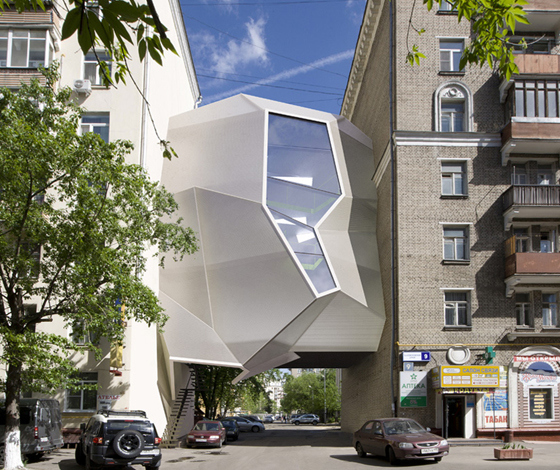As the world’s population continues to grow, the amount of space available for building home and office space is naturally set to decline. However, with a lot of imagination and a little bit of skill, we can see this not as a disadvantage, but rather as an opportunity to creatively design small, energy efficient yet comfortable housing and office space.
Getting Creative
As you can see from the images from FlavorWire, there are many ways to create sustainable, practical apartment buildings, condos, homes and offices with only a limited amount of space. At the same time, those who do not have the tools and/or inclination to build such radical structures can still make a difference in their city by creating small, sustainable commercial and residential structures that are environmentally friendly, practical and attractive.
The creation of small, off-the-grid communities is becoming more commonplace; in fact, it has been listed as one of the top architectural trends of 2014, according to Architizer. These houses are undoubtedly a lot smaller than many of us are used to, but they use space efficiently, are aesthetically appealing and comfortable, and have only a minimal impact on the environment.
At present, these off-the-grid communities leave residents without access to public transportation, making it difficult for people to get to school or work. However, this may well change in the near future as such communities create local work opportunities and small businesses arise to meet the needs of these residents. What’s more, this small housing model is being seen as a very alternative for those who live in poorly constructed houses in lower class neighborhoods.
It may surprise you to know that many of these amazing structures are constructed by people without a Masters or even a Bachelor’s degree. In fact, many people in this industry get the training and practical experience they need from vocational training schools like Tulsa Welding School that specialize in providing on the job training and quality education for skilled workers who might turn out to build the radical new homes, apartment buildings and skyscrapers of tomorrow.
Getting in on the Act
You don’t have to be a professional architect, engineer or homebuilder to be innovative in the use of small spaces. There are plenty of things even the average individual can do to make use of home or work space well. Doing so can save you tens of thousands of dollars as you move into smaller housing than you would have originally considered.
- Get rid of unnecessary clutter. It has been estimatedthat the average American has well over $2,000 worth of storage items. Keeping this clutter clean and organized (or attempting to find needed items in the clutter) is known to cause elevated levels of stress. While there are plenty of creative ways in which you can store your clutter, i.e. building shelves under the stairs, adding shelf space to your laundry room, buying storage containers that fit under the bed, etc., it is much better to simply sell what you do not need and only keep things you really use.
- Choose the right home furnishings. Small spaces can look larger if you decorate them properly. Use light colors, woven fabrics and mirrors set up in strategic locations.
- Choose the right lighting. The ideal is to make maximum use of any natural lighting you home has. Choose window treatments that enhance this lighting and add to it by choosing bright yet attractive light fixtures.
Making innovative use of small spaces is a trend that is set to become increasingly popular as time goes on. Small spaces are environmentally friendly, practical and easy to maintain, and you can create them according to your own personal style. Everyone from architects to home renters/owners can get in on the trend and enjoy the benefits of making the most of small work and living areas.
Author Bio: Monica Gomez is a freelance career and environmental writer. She is passionate about helping people live healthy and happier lives. She also believes that sustainable energy and design could help the environment.


